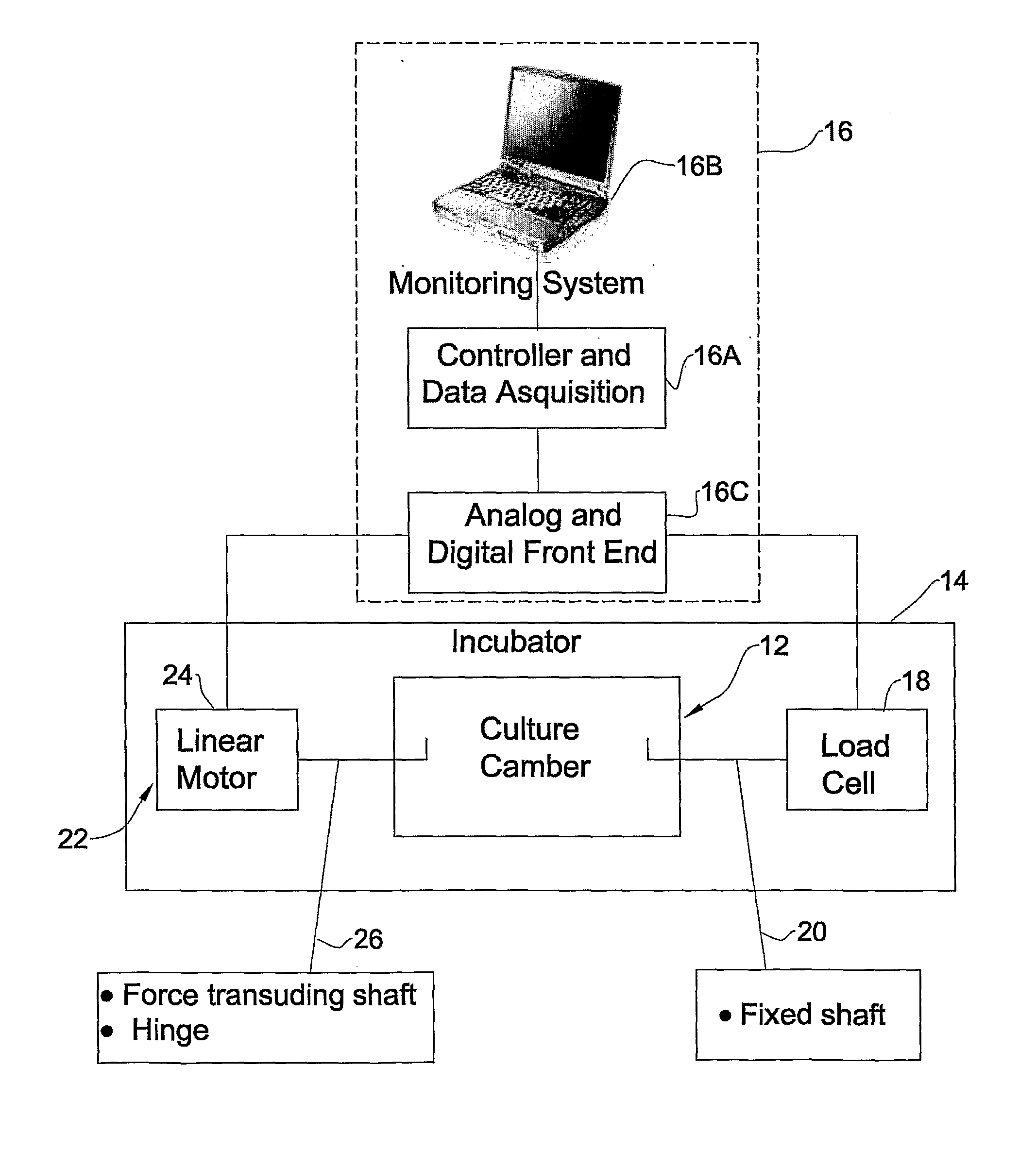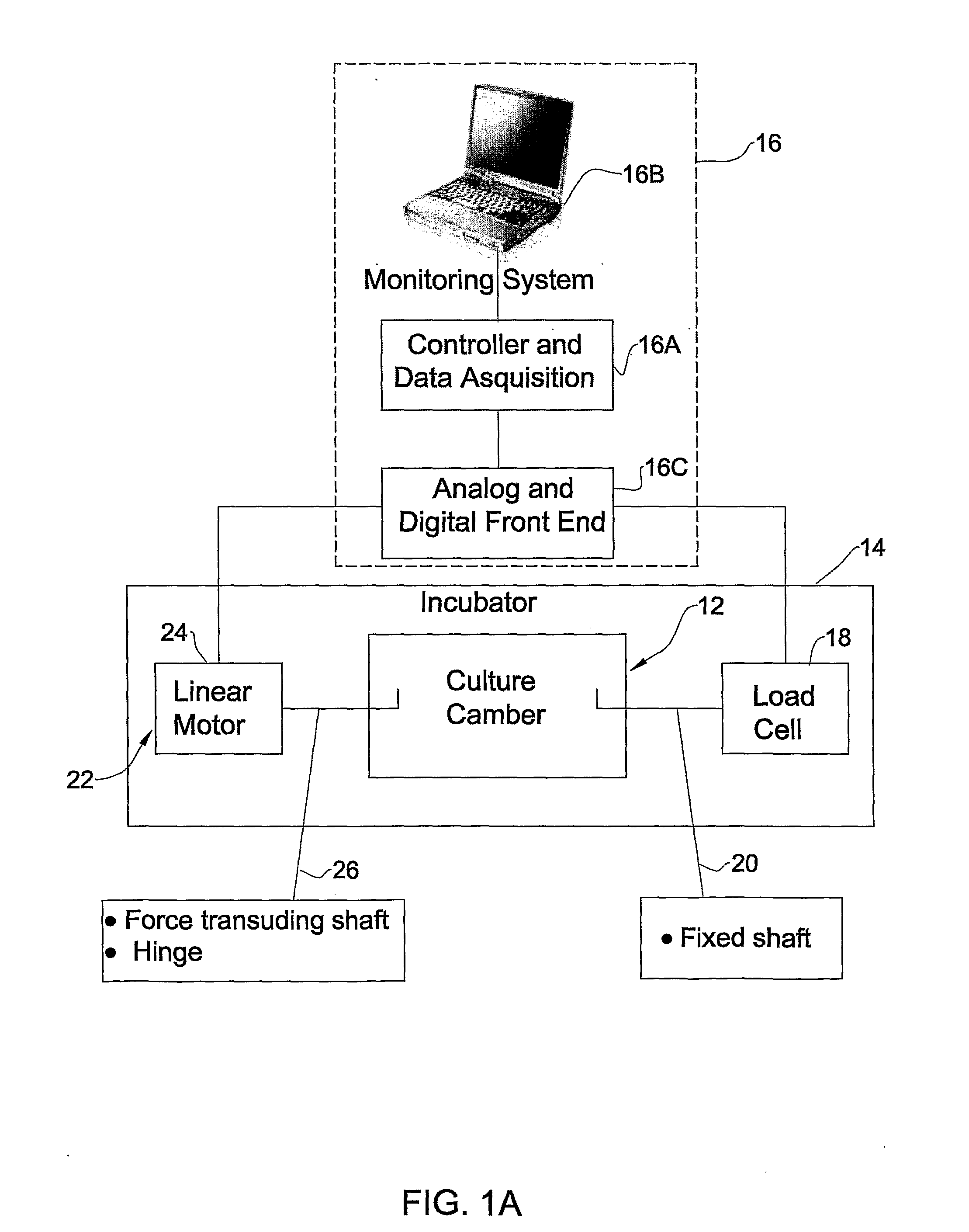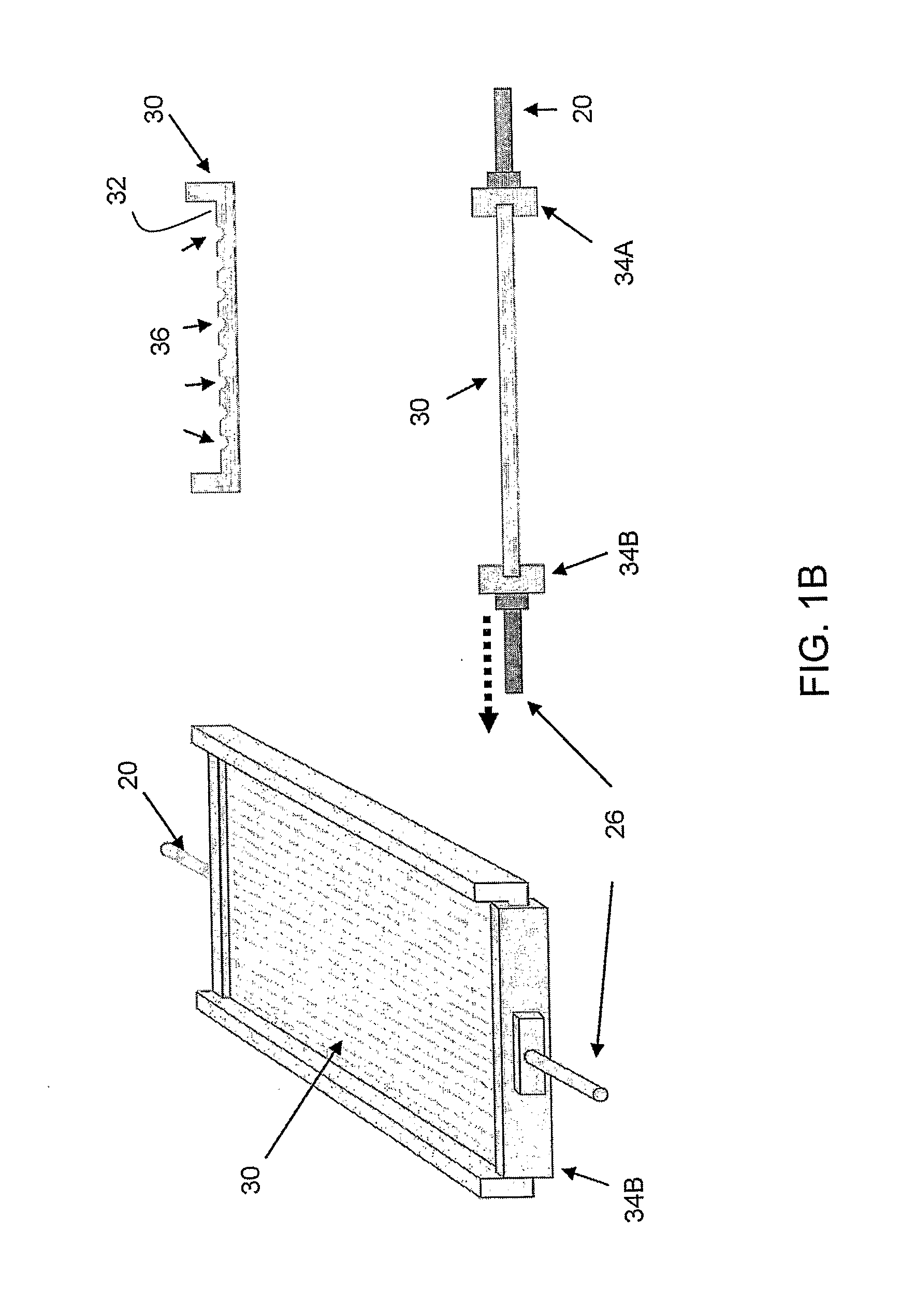Compartmental extract compositions for tissue engineering
a tissue engineering and composition technology, applied in the field of tissue regeneration, can solve the problems of limited allograft based therapy, inherently problematic traditional approaches to reconstructive surgery, and inferiority of synthetic grafts to their biological counterparts, and achieve the effects of improving the quality of tissue engineering
- Summary
- Abstract
- Description
- Claims
- Application Information
AI Technical Summary
Benefits of technology
Problems solved by technology
Method used
Image
Examples
example 1
Culture Device
[0319]Referring to FIGS. 1A and 1B, there is illustrated an example of a device 10 of the present invention configured and operable for growing cells. The configuration of device 10 is aimed at creating environmental conditions similar to those encountered by cells and tissues in their natural environment inside a living organism. The device is capable of exerting mechanical force onto the cells and to provide a patterned topography of the surface onto which the cells are attached. The combination of mechanical stimulation and nano-scale or micro-scale patterned topography has a significant effect on the organization, orientation, growth, maturation and function of cells and tissues.
[0320]The present invention thus provides a novel device capable of exerting mechanical forces and having a patterned surface topography for culturing cells or for generating an engineered tissue. The cells or the engineered tissue cultured in the device may be further used for extraction o...
example 2
Preparing a Transplantable Scaffold for Skin Tissue Engineering
[0340]Materials and Methods
[0341]Culturing of Dermal Fibroblasts
[0342]Adult normal human dermal fibroblasts are purchased from Lonza (Clonetics-NHDF-Ad Cat. Cc-2511, Lonza, Basel, Switzerland) and are propagated in fibroblast growth medium (FGM; Lonza) containing 10% fetal bovine serum (FBS; Lonza). The cells are maintained at 37° C. in a 5% CO2 incubator.
[0343]Alternatively, dermal fibroblasts are isolated from skin samples using the following method:
[0344]Samples of foreskins obtained from new-born boys are cut to a size of about 5×5 mm, washed twice in PBS, rinsed in 70% ethanol, and washed again twice in PBS. Then the samples are treated with Dispase (Gibco) overnight at 4° C. The epidermis is then stripped off, and the dermis is treated with 0.25% trypsin (Sigma) at 37° C. Trypsin inhibitor is used to stop the digestion. The resulting dermal cells are centrifuged at approximately 500 g for 5 minutes and suspended in...
example 3
Preparing a Transplantable Scaffold Using Two Cell Types in the Redesigning Step
[0367]Bone marrow derived mesenchymal stem cells are used as demonstrated in step 1 in Example 2 above, to form a mesenchymal sheet. Then the extracellular compartment is isolated (see step 2). Then redesigning is done by seeding firstly dermal fibroblasts, followed by cell elimination, then a second step of redesigning is done by seeding epidermal keratinocutes, followed by a second step of cell elimination. Alternatively, the two cell populations are mixed prior to seeding and seeded simultaneously.
PUM
| Property | Measurement | Unit |
|---|---|---|
| time | aaaaa | aaaaa |
| pH | aaaaa | aaaaa |
| concentration | aaaaa | aaaaa |
Abstract
Description
Claims
Application Information
 Login to View More
Login to View More - R&D
- Intellectual Property
- Life Sciences
- Materials
- Tech Scout
- Unparalleled Data Quality
- Higher Quality Content
- 60% Fewer Hallucinations
Browse by: Latest US Patents, China's latest patents, Technical Efficacy Thesaurus, Application Domain, Technology Topic, Popular Technical Reports.
© 2025 PatSnap. All rights reserved.Legal|Privacy policy|Modern Slavery Act Transparency Statement|Sitemap|About US| Contact US: help@patsnap.com



